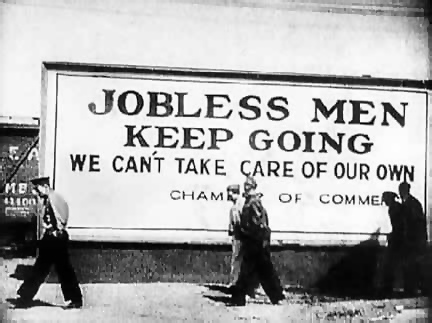 Have you ever been on a sales call where the client was in total control? Of course you were. We all were. And it’s a real bear trying to change things when it happens. At some point, it becomes a runaway sales call and the client has manipulated and controlled everything. When this occurs, you lose all negotiating power, your ability to identify their problems, the chance to close, and anything else that will help you win their business.
Have you ever been on a sales call where the client was in total control? Of course you were. We all were. And it’s a real bear trying to change things when it happens. At some point, it becomes a runaway sales call and the client has manipulated and controlled everything. When this occurs, you lose all negotiating power, your ability to identify their problems, the chance to close, and anything else that will help you win their business.
I was in one of those memorable events once along with one of my resellers, in a previous life. Since we only sold through the dealer channel (i.e., value-added resellers), I was there representing the software vendor I worked for at the time and supporting our reseller. So I let the reseller run the meeting. Sounds innocent enough. Yea, Right! The client had about four or five people in the room and were very polite and cordial. And then they brought in Hans, their “technical guru”. (Seriously, that was his name – Hans) That’s when things changed for the worse.
Hans began to tell us about how challenging their business was as one of the leading carpet manufacturers in the industry. They sold to carpet distributors (who sold to stores such as Home Depot), major retail outlets (such as Home Depot), small carpet dealers, and other various distribution channels. As a result, their challenge was forecasting future business, since many of their clients changed or canceled their orders even after his company started manufacturing their orders. This caused enormous wastes when not managed properly. So they were looking for a product that would help them plan their business, forecast sales, manage their accounts, and basically cure world hunger (well, not exactly, but that’s what it sounded like at the time).
Every time our reseller tried to present how our product could potentially solve his problem, Hans, in his heavy Bavarian accent, would shoot it down, saying in a condescending tone, “You don’t understand our business. That won’t work because…” It seemed like he kept trying to set us up with a description of a problem, only to say that anything we proposed wouldn’t work. It was as if he already knew it wouldn’t work before he opened his mouth. And, in fact, that’s exactly what was happening. You see, he told us that every vendor he brought in had the same useless solutions and we were no different than them. He proceeded to challenge us to solve his problem since no one else could. He was in total control of the meeting. He made it clear that he was bringing in vendor after vendor, only to chew them up and spit them out. This painful episode prevailed for quite some time, that is until I spoke.
Since I let the reseller do all the talking so far, I noticed that he was desperately trying to solve this guy’s problem and sell him our product. I, on the other hand, saw something else going on — a big game that Hans was enjoying. I think he called it “Kill the vendor”. He was, in fact, trying to find a solution since his problem was genuine. But he was using his unique situation to challenge every vendor he could get his hands on. That is until I realized that his problem was a process problem, not a technology issue. In other words, his problem was systemic and had to be resolved by the way they did business with their clients. Once that was resolved, then they could use technology to track and manage their business. Unless they fixed the way they handled their own customers, technology wouldn’t do them much good.
I waited for just the right moment to initiate a well-placed cough to get their attention. I then leaned forward in my chair and said, “Excuse me Hans, but what makes you think that technology can solve your problem.” He started to answer, but only a few half words and stutters came out. He stared at me, then at the ceiling. After what seemed like 5 minutes of total silence, he leaned forward and said, “No one has ever asked me that before.” So I said, “So what’s the answer?” And he said, “I don’t know. But I think you are on to something. We’ve been looking for a solution in the wrong place.” We then had a very cordial and intellectual discussion about business processes and how to handle customers who screw up his business by canceling orders after he started manufacturing them. Hans’ demeanor totally changed. He started treating us with respect and assigned himself a project to figure out how they will change their processes to resolve their internal issues. Only after that was done would he revisit technology.
I have since moved on and don’t know what Hans and his company ultimately decided to do. Frankly, I don’t think our product could have helped him anyway, but it was a very interesting exercise in managing a sales call. Wouldn’t you agree? With some good listening skills and asking just the right questions, you can keep control of your sales meetings, qualify your prospects, and arrive at the right solutions, even if that means walking away because you don’t have the right solution for their problem.
Good Luck & Good Selling!
 Russ Lombardo is President of PEAK Sales Consulting, LLC and an experienced CRM and Sales consultant, trainer, writer, speaker and radio show host. Russ works with businesses to help improve their customer acquisition and retention for increased revenue and success. Russ is author of the books, “CyberSelling”, “CRM For The Common Man” and “Smart Marketing”. He can be reached at 702-655-5652 and emailed at russ@peaksalesconsulting.com.
Russ Lombardo is President of PEAK Sales Consulting, LLC and an experienced CRM and Sales consultant, trainer, writer, speaker and radio show host. Russ works with businesses to help improve their customer acquisition and retention for increased revenue and success. Russ is author of the books, “CyberSelling”, “CRM For The Common Man” and “Smart Marketing”. He can be reached at 702-655-5652 and emailed at russ@peaksalesconsulting.com.

 Brandt Smith is a sales, marketing, public speaking, and professional development expert. Learn about achieving wealth and life balance through entrepreneurship at Wealth and Wisdom, where he is cofounder and senior editor. Their advice on wealth building, personal development, and life balance can help take you to the next level. You can also read more of his thoughts on his blog.
Brandt Smith is a sales, marketing, public speaking, and professional development expert. Learn about achieving wealth and life balance through entrepreneurship at Wealth and Wisdom, where he is cofounder and senior editor. Their advice on wealth building, personal development, and life balance can help take you to the next level. You can also read more of his thoughts on his blog.
 Have you ever been on a sales call where the client was in total control? Of course you were. We all were. And it’s a real bear trying to change things when it happens. At some point, it becomes a runaway sales call and the client has manipulated and controlled everything. When this occurs, you lose all negotiating power, your ability to identify their problems, the chance to close, and anything else that will help you win their business.
Have you ever been on a sales call where the client was in total control? Of course you were. We all were. And it’s a real bear trying to change things when it happens. At some point, it becomes a runaway sales call and the client has manipulated and controlled everything. When this occurs, you lose all negotiating power, your ability to identify their problems, the chance to close, and anything else that will help you win their business. Russ Lombardo is President of
Russ Lombardo is President of 

